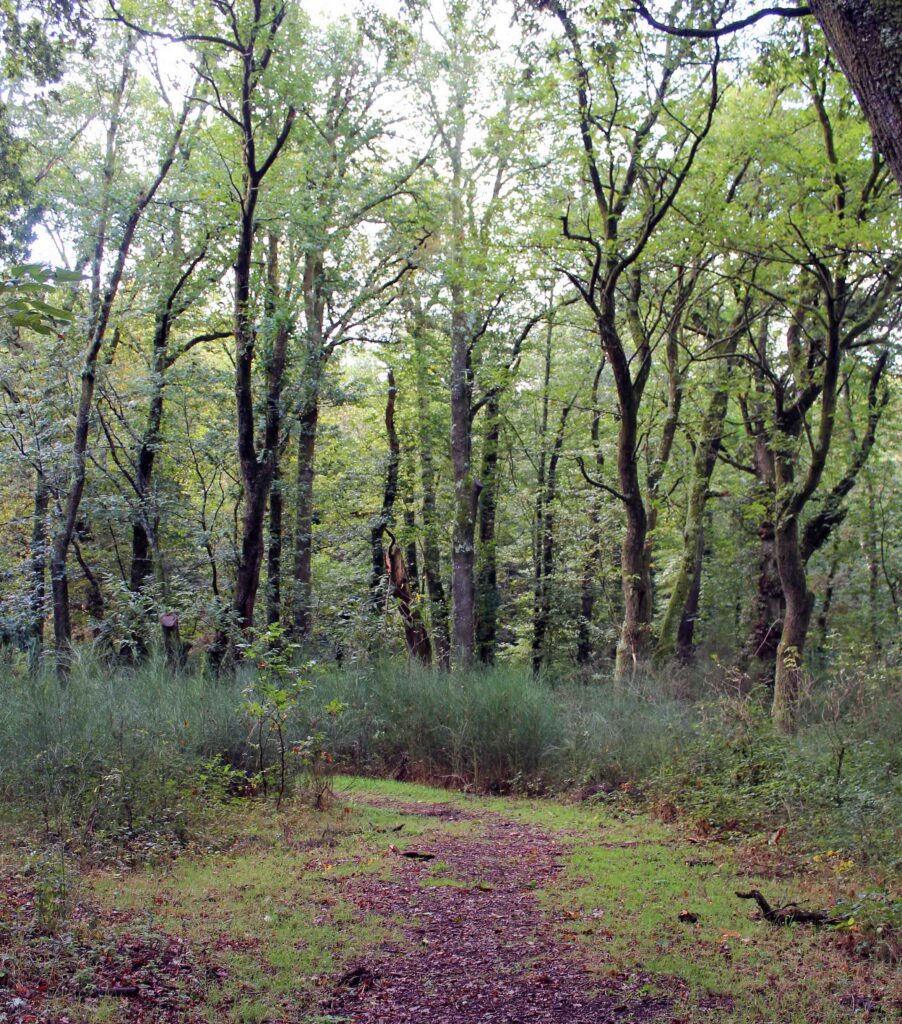Time to get specific on the wood that’s used and grown in Galicia. The first species I’ll be talking about is Sweet Chestnut, because its a popular native species, is regularly used for construction and plays an active role in Galician culture. The more I’ve read and learned about this wood the more I’ve wanted to share, from its travels across Europe to how the potato has contributed to its decline. This article talks about where the Sweet Chestnut in Galicia originated, how it supported the poor and why their reliance on the tree waned.

Sweet Chestnut (Castanea sativa), also known as Spanish or European Chestnut, is a multi-purpose tree, producing nuts, timber and tannins. And it is this usefulness that has helped it travel across the globe. Originating in Turkey, the Greeks are understood to be the first humans to have spread Sweet Chestnut. However, it was the Romans that brought this tree to Spain as well as many other countries across Europe. It is now most popular and prevalent in France, Italy, Spain, Portugal and Switzerland, where it is grown in orchards and plantations.
The Romans spread the tree, harvesting its nuts and coppicing chestnut for poles to be used in vineyards. As Sweet Chestnut became established in Galicia it grew into an important source of food for Galicia’s isolated mountain communities. The land holdings in Galicia are traditionally small and often an owner would only have one tree for nut production. “It is said that a family, their pig and perhaps a cow, could survive through the winter on the fruit of a single tree.” The nuts could be eaten fresh until January, after which chestnuts can be dried and ground into flour. As both food and firewood, sweet chestnut supported Galicia’s peasant communities earning the name ‘el pan de los pobres’ (the bread of the poor).

However, following its most important era during the middle ages, the prevalence of the sweet chestnut tree began to decline. The first significant threat came from the humble potato. First recorded to have been planted in Galicia in the Herbón Monasteries Gardens, toward the end of the 16th Century. The potato, as well as maize and other cereals, would go on to replace chestnut as the staple food of the poor. Along with this the tree has faced threats from pests and disease to rural depopulation, causing a great decline not just in Galicia but across Europe as a whole. This decline is most evident in France where it’s estimated there was a reduction from 450,000 ha in 1841 to 32,000 ha in 1975.
However, this species is far from forgotten, occupying 130,000ha (2001) in Spain, appreciation for this tree is on the rise. As you can read in my earlier blog on species used in architecture, chestnut is popular with architects for its strength, aesthetic, and durability. Over the next few posts I’ll be uncovering what helps produce these characteristics, additional uses for the tree, its role in Galician culture, current threats and recent innovations. Stay tuned.

References
Albo, Francisco “La Propagación De La Avispa Del Castaño Causa Alarma En O Courel.” La Voz de Galicia, 19/05/2018 2018.
BBC. “Outbreak of Asian Wasps Found in Kent Sweet Chestnuts.” BBC, 2015.
Farrella, Edward. “Spanish Chestnut in Southwestern France and Northern Spain.” Journal of the Society of Irish Foresters 71 (2014).
Fernandez, Marium. “El Castaño Marca La Diferencia En Moneixas.” Faro de Vigo, 2013.
Fioravanti, Marco, Jean Lemaire, and Marco Togni. Enhancement of [Chestnut] Timber Production. 2010.
Galego, Campo. “Plantación Y Cuidados Del Soto Para La Producción De Castaña.” Campo Galego, 2015.
Galicia, Tourismo de, “The Galician Potato, as Inconspicuous as It Is Tasty,” Tourism of Galicia. Xunta de Galicia, 01/11/20, 2018, http://blog.turismo.gal/experiences-en/the-galician-potato-as-inconspicuous-as-it-is-tasty/.
Martínez, Luis. “Moneixas, Uno De Los Últimos Bastiones De La Madera De Castaño.” Campo Galego, 03/04/19 2019.
Melicharová, L., and O. Vizoso-Arribe. “Situation of Sweet Chestnut (Castanea Sativa Mill.) in Spain, Galicia: A Review.” Scientia Agriculturae Bohemica 2012 (01/01 2012): 78-84.
Pereira-Lorenzo, Santiago, and Ana Ramos-Cabrer. “Chestnut, an Ancient Crop with Future.” 105-61, 2007.
Timber, English Woodlands. “Wood Knowledge: Introduction to Sweet Chestnut.” In Wood Knowledge, https://www.youtube.com/watch?v=9bUxQVlV4IE. United Kingdom: YouTube, 2020.
Vilar, Clara, “El Magosto Gallego: Que Viva El Otoño,” Guía Repsol. Repsol S.A., 30/10/20, `2016, https://www.guiarepsol.com/es/viajar/vamos-de-excursion/el-magosto-en-galicia-tradicion-de-castanas-vino-y-fuego/.
